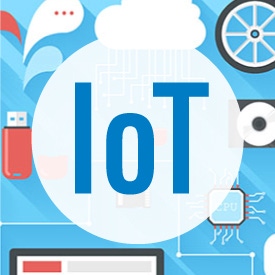
Deutsche Telekom has started offering services on its German NB-IoT network, completed the nationwide rollout of an NB-IoT network in the Netherlands and revealed that its T-Mobile US subsidiary will launch NB-IoT in 2018.
The much-hyped standard also appears to have made progress in China, where all three of the country's big mobile operators have now made investments in NB-IoT, according to an announcement from the GSM Association.
Deutsche Telekom AG (NYSE: DT) is offering customers in Germany a simple device connectivity package called "NB-IoT Access" as well as a more comprehensive deal -- under the "NB-IoT and Cloud of Things" banner -- that includes device and data management.
The update comes several weeks after a senior executive from Deutsche Telekom said that NB-IoT module prices would need to fall to attract interest from large enterprise customers. (See NB-IoT? Not at Those Prices, Say DT Customers.)
"To be honest, there are still no big tenders yet for NB-IoT," said Jens Olejak, a senior product manager at the operator's M2M unit, during a conference in London. "The module costs still between €10 [$11.21] and €15 [$16.82] rather than the $5 we are looking at and so no customer is doing a serious commercial tender."
While there was no word on module prices in the latest statement from Deutsche Telekom, the operator revealed that "NB-IoT Access" would cost about €199 ($223) for a six-month activation of up to 25 SIM cards with 500 kilobytes per SIM. For the "NB-IoT and Cloud of Things" package, with its additional features, Deutsche Telekom is charging €299 ($335).
NB-IoT is one of several low-power, wide-area (LPWA) network technologies that can be used to connect devices such as smart meters, which transmit small amounts of bandwidth and may need to be deployed for many years without interference.
It faces competition from a slightly costlier and more bandwidth-hungry cellular standard called LTE-M, as well as from technologies based on unlicensed spectrum, such as Sigfox and LoRa.
Analysts say that cellular industry representatives were originally dismissive of the need for an LPWA technology based on licensed spectrum but changed their minds when they saw the momentum behind Sigfox and LoRa.
In the rush to come up with a standard, NB-IoT also appears to have been hit by interoperability problems between Huawei Technologies Co. Ltd. and Ericsson AB (Nasdaq: ERIC), the world's two biggest equipment suppliers, although European chipmaker Sequans Communications expects these problems to be resolved in the next few months. (See Vodafone to Miss NB-IoT Launch Targets and Ericsson, Huawei incompatibility threatens NB-IoT – sources.)
Sequans CEO Georges Karam also disputes the module pricing differential between NB-IoT and the Sigfox and LoRa technologies. While modules based on Sigfox and LoRa are said to be available for as little as $2 per unit, Karam says they do not include the security and management features that come with NB-IoT.
As volumes grow, Karam is confident that NB-IoT module pricing can fall to just below $5 per unit.
Want to know more about the Internet of Things? Check out our dedicated IoT content channel here on Light Reading.
Karam's main concern is that support for LTE-M could derail NB-IoT. The former has gained support from AT&T Inc. (NYSE: T) and Verizon Communications Inc. (NYSE: VZ) in the US market and is also backed by Orange (NYSE: FTE) in France and SK Telecom (Nasdaq: SKM) in South Korea. (See Could LTE-M Torpedo NB-IoT?)
Recently, there have been signs of LTE-M interest in China, although the GSM Association (GSMA) today claimed that all of China's three big mobile operators have now rolled out NB-IoT networks in parts of the country.
Market leader China Mobile Ltd. (NYSE: CHL) is said to have switched on networks in such key cities as Yingtan, while China Unicom Ltd. (NYSE: CHU) has done the same in Shanghai, Guangzhou, Shenzhen and Fuzhou.
Meanwhile, China Telecom Corp. Ltd. (NYSE: CHA) has announced the rollout of a nationwide NB-IoT network.
European progress
While details of the Chinese NB-IoT moves are scarce, Deutsche Telekom said it would initially focus on introducing NB-IoT-based smart parking services in the cities of Darmstadt, Duisburg, Dortmund, Hamburg, Merzig and Moers.
It already claims to be offering services in the Netherlands, where it faces NB-IoT rivalry from Vodafone Group plc (NYSE: VOD), and says rollout is progressing well in Germany.
In the US, where its T-Mobile subsidiary now operates the country's third-biggest mobile network by customer numbers, DT plans to begin supporting NB-IoT from 2018 onwards in a move that could put pressure on the LTE-M businesses of AT&T and Verizon.
Deutsche Telekom claimed to have activated the world's first fully standardized NB-IoT network in Germany in October last year and in February said it was planning to extend NB-IoT coverage in various other countries where it had already begun rollout, including Austria, Croatia, Greece, Hungary, Poland and Slovakia. (See Eurobites: DT Makes Big NB-IoT Push.)
Vodafone, Europe's other big NB-IoT enthusiast, missed launch targets in Ireland and the Netherlands earlier this year but has subsequently introduced services for its Dutch customers. (See Vodafone to Miss NB-IoT Launch Targets.)
It also provides NB-IoT services in Spain, but the status of its commercial NB-IoT business in Ireland and Germany -- where it had also intended to launch services by the end of March -- remains unclear.
— Iain Morris, 

 , News Editor, Light Reading
, News Editor, Light Reading
About the Author(s)
You May Also Like












